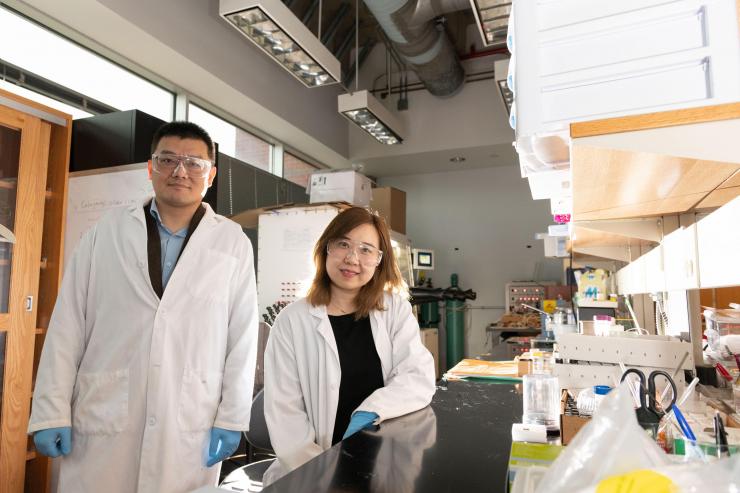By John Toon, Georgia Tech Institute Communications

Hailong Chen and graduate research assistant Xuetian Ma
High-energy X-ray beams and a clever experimental setup allowed researchers to watch a high-pressure, high-temperature chemical reaction to determine for the first time what controls formation of two different nanoscale crystalline structures in the metal cobalt. The technique allowed continuous study of cobalt nanoparticles as they grew from clusters including tens of atoms to crystals as large as five nanometers.
The research provides the proof-of-principle for a new technique to study crystal formation in real-time, with potential applications for other materials, including alloys and oxides. Data from the study produced “nanometric phase diagrams” showing the conditions that control the structure of cobalt nanocrystals as they form.
The research, reported November 13 in the Journal of the American Chemical Society, was sponsored by the National Science Foundation, and used U.S. Department of Energy-supported synchrotron X-ray beam lines at Brookhaven National Laboratory and Argonne National Laboratory.
“We found that we could indeed control formation of the two different crystalline structures, and that the tuning factor was the pH of the solution,” said Hailong Chen, an assistant professor in the George W. Woodruff School of Mechanical Engineering at the Georgia Institute of Technology. “Tuning the crystalline structure allowed us to control the functionality and properties of these materials. We believe this methodology could also be applied to alloys and oxides.”
Read the rest of the story at Georgia Tech Research Horizons.
Read the rest of the story at Georgia Tech Research Horizons.